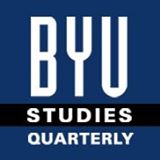BYU Studies Quarterly

Keywords
BYU Studies, apostasy, restoration
Abstract
Since early in the twentieth century, it has been common for Latter- day Saints to speak of a “Great Apostasy” that occurred in the centuries following the death and resurrection of Jesus Christ. Such a general apostasy has been viewed as providing the basic motivation for the Restoration, begun in earnest with Joseph Smith’s First Vision in 1820. The traditional apostasy narrative has centered on the argument that the church founded by Jesus Christ once possessed the same organization, doctrine, and authority restored in the nineteenth century but that, over time, these crucial components were either lost or corrupted. It has been maintained that the development of new rituals or changes to already- existing ordinances led to a decay in doctrine and practice, while the death of the original twelve Apostles left the church without authority or revelation to guide it. Further, the persecution of Christians (by both pagans and Jews) and the incorporation of Greek philosophy have also been taken to have played a role in diminishing the authenticity of the early church. This well-known way of narrating early Christian apostasy owes its origins and developments to the efforts of, primarily, three authors: B. H. Roberts (in Outlines of Ecclesiastical History and The Falling Away), James E. Talmage (in The Great Apostasy), and Joseph Fielding Smith (in Essentials in Church History). In the words of historian Eric Dursteler, these three authors have “unquestionably . . . provided the foundation for all subsequent discussions of the apostasy. In many ways, this trio’s conceptualizations still inform how Mormons think about the apostasy.”1
Recommended Citation
Frederick, Nicholas J. and Spencer, Joseph M.
(2021)
"Remnant or Replacement? Outlining a Possible Apostasy Narrative,"
BYU Studies Quarterly: Vol. 60:
Iss.
1, Article 5.
Available at:
https://scholarsarchive.byu.edu/byusq/vol60/iss1/5
